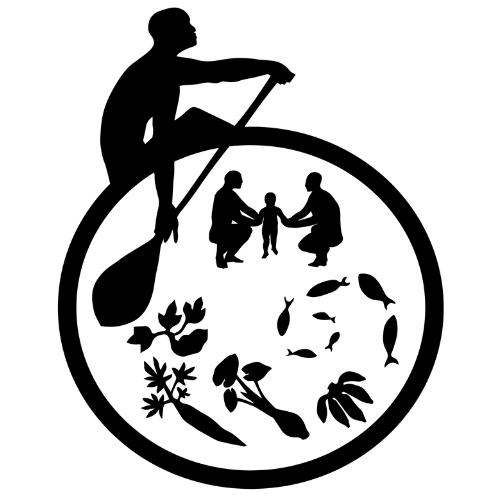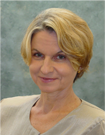
The Fourth Annual CHL meeting was held in American Samoa in June 2014. CHL Team American Samoa greeted us warmly and graciously with a traditional Samoan Ava Ceremony, setting the stage for a week of sessions where CHL Teams from Guam, CNMI, Alaska, Hawaii, Palau, Marshall Islands, Federated States of Micronesia, American Samoa and CHL’s External Advisors worked on planning and integration of activities to enhance child health through testing community based strategies, training, analyzing data, and communicating findings.
We are extremely fortunate to have engaged committed External Advisors to the CHL Program who have extraordinary experience in obesity prevention from a comprehensive range of complementary perspectives. Dr. Boyd Swinburn, from the University of Auckland, has led community based obesity prevention trials in the South Pacific, and is Co-Director of a World Health Organization Center dedicated to preventing obesity. Dr. Suzanne Murphy, Emeritus with the University of Hawaii, is a renowned nutritionist who has led Institute of Medicine Teams to guide US food and nutrition programs. Dr. Wendy Snowdon, of WHO Fiji Office, has worked throughout the Pacific, formerly with the Secretariat of the Pacific Community, and now with WHO, is an expert in food and nutrition policy. Dr. Jennifer Anderson, Emeritus with the Colorado State University, is a nutritionist who developed a healthy food and physical activity educational intervention for young children. Dr. Kathryn Kolasa, Emeritus with the Brody School of Medicine at Eastern Carolina University, and Master Educator for an array of health professionals in nutrition and dietetics.
CHL is completing the community based intervention testing period, and continuing to conduct young child obesity prevalence surveys in the Freely Associated States of Micronesia. We will soon be conducting follow up assessments of the community based intervention, to evaluate changes, and will soon be visiting comparison communities to share key learnings with them. Twenty CHL trainees from 11 jurisdictions are studying and conducting CHL projects in their communities; one has already graduated. I thank all members of the CHL Team, and all of our partners, for their passion and effort, and for working together to improve the environment for the children, our future.
Aloha, Rachel
Professor Rachel Novotny, PhD, RD
Principal Investigator and Program Director, Children’s Healthy Living Program
From the CHL Education Program
Unique training program on Childhood Obesity Prevention in the Pacific
They come from many Pacific Islands and communities and share one common vision, to return home and contribute to the ongoing efforts to promote healthy children and prevent NCDs. These are the 21 Children’s Healthy Living trainees. Their goal is to complete a university degree in nutrition, public health, epidemiology, health sciences, or natural resources management. In addition to their degrees each CHL trainee participates in the CHL training program created to meet the particular health issues and concerns of Pacific populations. The program includes a one-of-a-kind seminar series where trainees learn about: The complex web of causes of childhood obesity (seminar 1); State-of-the-art knowledge to design actions that can impact childhood obesity (seminar 2); Community-engaged approaches (seminar 3) and; Advocacy & policy tools for obesity prevention (seminar 4). The seminar instructors, Dr, Jodi Leslie and Dr, Treena Delormier have extensive experience working in their own, and other indigenous communities, on public health and nutrition issues. In seminar trainees can discuss their particular views and experiences with peers who can relate to their similar concerns. The seminars prepare trainees to design a project that is relevant to their jurisdiction and that supports CHL goals. For example, some projects are evaluating the effectiveness of programs, some are promoting school gardens and others are engaging families in cooking local foods. Each trainee has a team of advisors who helps match student interests and strengths to their project area. This summer most trainees returned home to find out how best to prepare for conducting their project in the coming year. We look forward to hearing back from the students on what they found out.
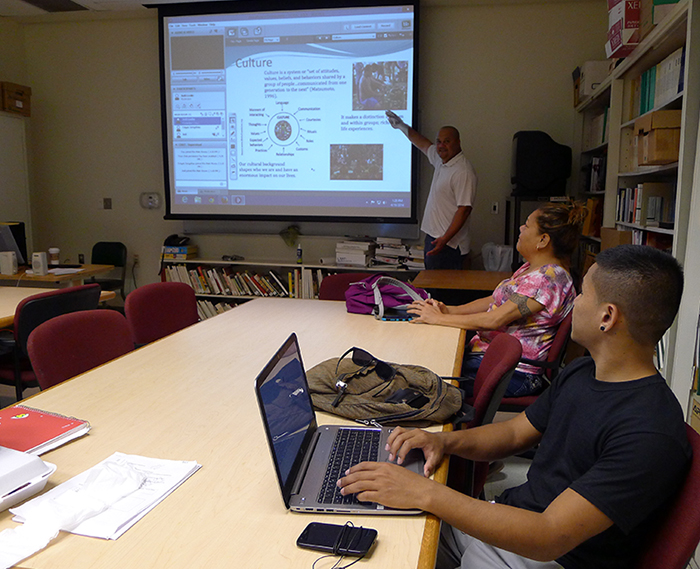
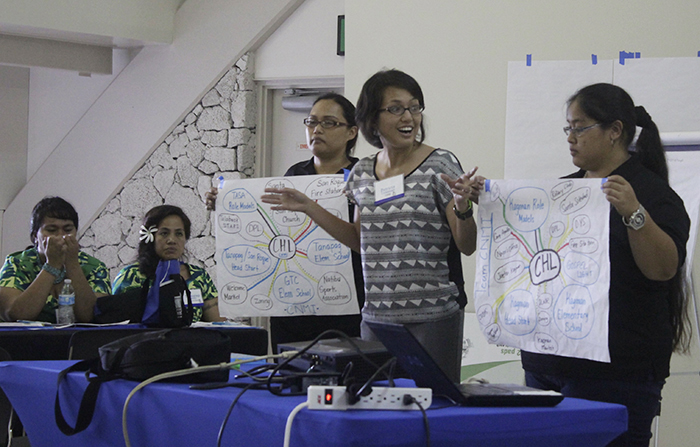
CHL-influenced distance education nutrition class for the Pacific now being taught
Providing science-based information on nutrition, within the Pacific Islands’ context, is important for Pacific learners to see where their knowledge is relevant and useful. FSHN 185: The Science of Human Nutrition, modified for Hawaii and the Pacific, and supported by CHL, is Pacific-relevant learning. This on-line course, taught by Dr. Marie Kainoa Fialkowski of the UHM-CTAHR-Department of Human Nutrition, Food and Animal Sciences, provides introductory nutrition education in an asynchronous way (i.e. you don’t have to be on-line the same time as the instructor). The course has now started for Fall 2014, and will be taught in 2015. More information on the current course is here.
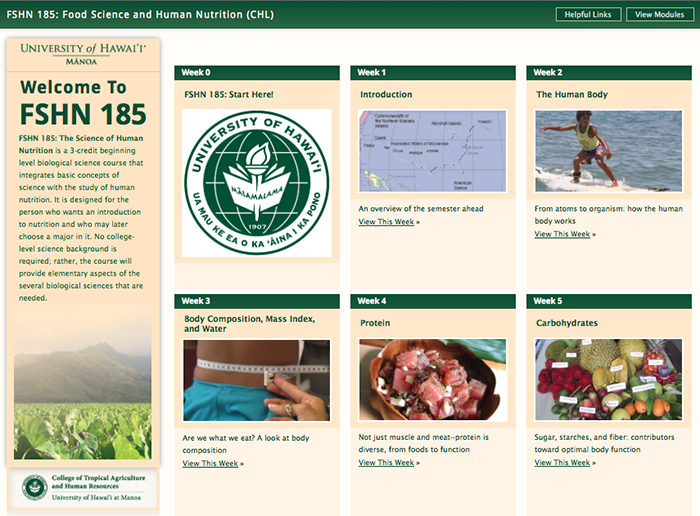
Alaska
CHL Team Alaska
Although this summer has been one of the rainiest on record in Alaska, CHL efforts have not been dampened and partnerships have blossomed! In partnership with Fairbanks Families we are hosting a booth at the Downtown Farmer’s Market that promotes healthy beverage choices. We offer samples of fruit and herb infused water and recipes developed by SNAP-Ed to take home. We also set up a “sugar shocker” display, which consists of popular sugar-sweetened beverage bottles filled with sugar cubes to show how many teaspoons of sugar each drink contains. On hot and sunny days the water tasting is especially popular and attracts 30-40 adults and children to the stand. We hope to inspire parents to try flavoring their own water at home instead of buying fruit drinks or soda.

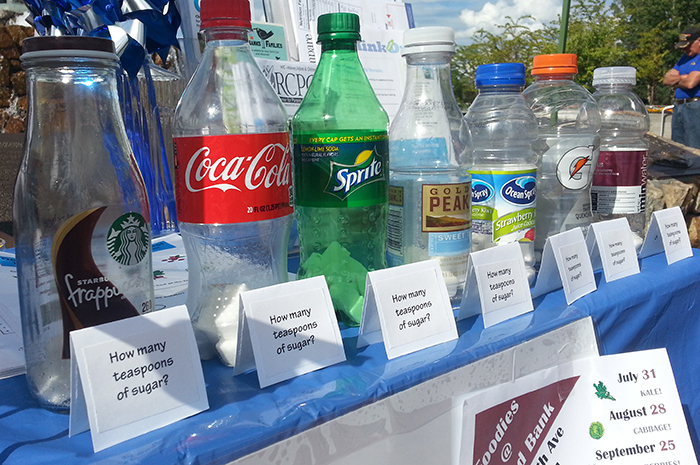
CHL has also partnered with Fairbanks Families to put on a free winter gear exchange during the Best Beginnings Family Health Fair in September. The Health Fair is an ideal venue for the exchange, as it is well-attended and provides free health screenings for children ages 0-8 years old. The CHL team has worked with Weller and Woodriver elementary schools, as well as organizations like THREAD, Alaska Center for Resource Families, and the Carol H. Brice Family Center, to collect preschooler-sized winter clothing and sports equipment from the community over the last several months. We have received items ranging from snow shoes, to snow pants, to ice skates. Our goal is to provide children in need with appropriate gear to stay active during the coming winter. We are making a final push to collect donations during the last month before the event.

American Samoa
CHL Team American Samoa
The American Samoa Community College (ASCC)- Children’s Healthy Living (CHL) team has many important community partners that support the vision of establishing ‘sustainable community-based systems and environments to raise healthy children in the Pacific Region.’ One such partner from the onset of the CHL program has been the American Samoa Early Childhood Education (ECE) Program.
The strong partnership between these two programs has enabled the ASCC CHL team to conduct measurements, introduce gardening and hydroponic projects, and teach intervention activities at each of the different intervention schools. In addition, ECE administrators have enrolled their staff into several training workshops hosted by the CHL team.
Toalua Taisau, an early childhood educator and CHL role model at the Faga’itua ECE center has been very instrumental in her community by actively promoting healthy living with her students, their family members, and high school and Jr. ROTC instructors at Faga’itua High School. Before the CHL program began, she conducted physical activity sessions with her students using workout videos, but now, having successfully completed the one-day SPARK physical education program workshop, she has many more creative and fun ideas to engage her students in physical education. Additionally, Toalua has noticed that some parents have started listening to her advice and they are no longer feeding their children junk food before dropping them off at school. Though very saddened to learn that American Samoa has one of the highest concentrations of overweight and obese people in the world, Toalua is very thankful for all of the learning opportunities that she has been able to attend at ASCC through the CHL program. She continues to find ways to apply her newly-found healthy living knowledge with the young people of American Samoa as she continues to work towards a doctoral degree in early childhood education.
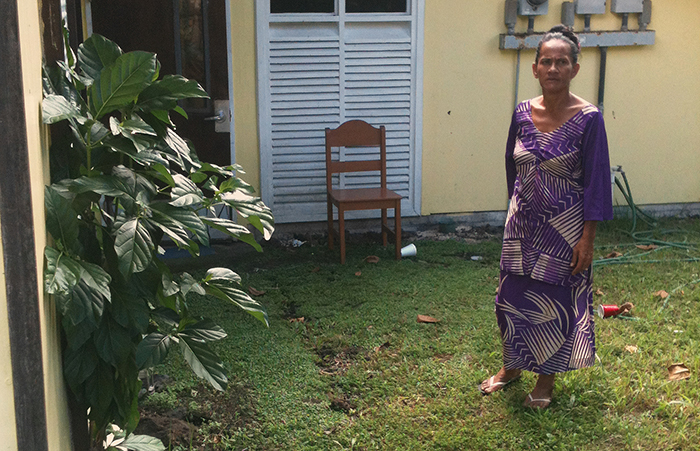
Commonwealth of the Northern Mariana Islands
CHL Team Commonwealth of the Northern Mariana Islands
These days, community involvement and collaboration continue to play an increasingly prominent role in supporting community health. Since the inception of the CHL Program, the CNMI CHL team has worked vigorously with various key stakeholders in the community. With the help and support of our collaborating partnerships, we have been able to successfully accomplish many tasks and goals that may not have been possible without their support.

The relationships we continue to foster with our key stakeholders helps us get to the root of what we need in order to serve our community better. Every partnership is unique. It is that “uniqueness” that creates endless possibilities. Maximizing the gifts and opportunities as well as leveraging the degree of influence of each partner, contributes to the overall success of CHL and the general health of the CNMI. Our partners in the community continue to play a valuable role in the success of CHL and making a stronger healthier community.

Our CNMI CHL team greatly acknowledges the guidance and support from the CNMI Public School System, the Head Start Program, the TASA and Kagman CHL Role Models, the Diocese of Chalan Kanoa, the Women, Infant and Children (WIC), the Department of Community and Cultural Affairs – Child Care Licensing Program, Child Care Development Fund, the Rotary Club and the Division of Youth Services, Natibu Sports Association, Let’s Move Marianas, and the 4H Program. “It takes a village to raise a child” may sound clichéd, but it’s true. All these organizations have contributed to the progression and success of the CHL Project here in the CNMI.

Freely Associated States of Micronesia
CHL Team Freely Associated States
The FAS team is currently preparing to conduct the next prevalence survey in Yap, FSM. Plans are being made to survey children in September 2014; both on the main Yap island, as well as Ulithi, one of the outer islands.
Since the last data collection effort, data entry of “Other Forms” has concluded for RMI and Palau, who completed prevalence surveys in January 2014 and April 2014 respectively. Both jurisdictions have begun the Food and Activity Log (FAL) QC, which needs to be successfully passed and scored by the Nutrition Support Shared Resource (NSSR) before data entry can begin.
Pohnpei state, whose survey concluded in November 2013, has also concluded “Other forms” data entry and begun FAL data entry. FAS CHL Trainee Trisha Johnson (Pohnpei) successfully passed the FAL QC and has been helping with the entry of FAL data.
Community Assessment Tool (CAT) surveys have been completed for the three jurisdictions where the surveys have concluded (Pohnpei, RMI, and Palau).
The CHL team congratulates Julia Alfred (formerly, RMI site manager for CHL) on her appointment as Secretary of Health for the Marshall Islands. Julia will continue to work closely with CHL to advance health for the children of RMI.
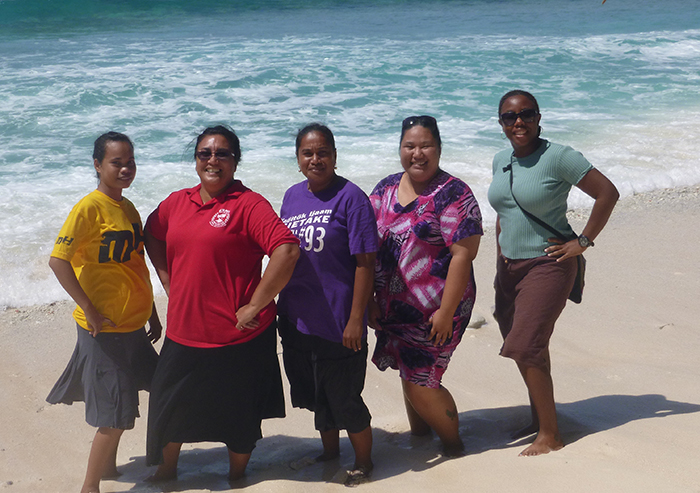
Members of the FAS team also travelled to Pago, Pago American Samoa for the CHL Annual Meeting in June 2014. Preliminary survey results from Pohnpei, RMI and Palau were presented at the meeting.
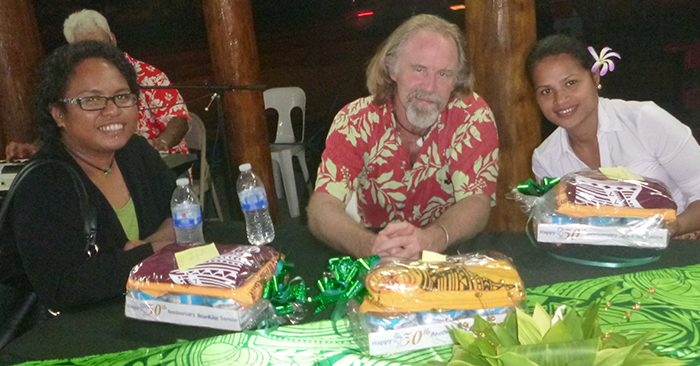
Guam
CHL Team Guam
As part of Guam’s CHL mini-grant program, Guam Girl Scouts Inc. was awarded seed money to start a troop in the villages of Yona and Talofofo. Guam Girl Scouts Inc. is an international organization that exposes young girls to various educational and physical activity experiences under the advisement of trained troop leaders. Scouts go through a series of Journeys in which they learn to “Discover” their talents, “Connect” to form relationships, and “Take Action” to make their community a better place.
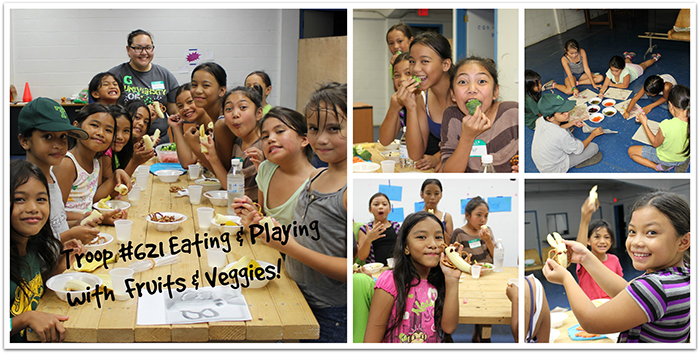
Unlike the Boy Scouts, there is currently no Girl Scout troop in or around the villages of Talofofo and Yona. Ms. Elaina Todd, Director of Membership Services with the local Guam Girl Scouts chapter, aims to create a start-up troop for at least 10 to 12 Daisy Scouts (girls ages 5 to 6) and 10 to 12 Brownie Scouts (girls ages 7 to 8) who live in or around these two villages. Guam Girl Scouts seek to create a volunteer force made up of parents, village leaders, and high school students who will serve to act as role models and potential future troop leaders for the girls. Ms. Todd will act as the temporary leader for the troop.
Before the girls’ Journey begins, volunteers will go through a series of trainings to familiarize themselves with Girl Scouting and the different Journeys, and to learn to serve as role models for the Scouts. This training will emphasize the “Healthy Habits” Journey, created specifically for Girl Scouts in partnership with the Healthy Weight Commitment Foundation, which will be the focal program for the Scouts in this troop. The curriculum in “Healthy Habits” focuses on many of the CHL Program’s target behaviors:
- Increasing the Consumption of Fruits and Vegetables: Scouts will learn about proper nutrition and a balanced diet, how to make healthy, nutritious snacks, and how to plant their own fruits and vegetables in a garden.
- Increasing Physical Activity: Scouts will play fitness games, go on nature walks and hikes, and will learn the importance of “Energy In = Energy Out,” which emphasizes regular exercise and activity for good health.
- Increasing Water Intake and Decreasing Sugar Sweetened Beverages: Scouts will explore the big “WOW,” or the Wonders of Water, and why clean drinking water is important for them and the community.
- Decreasing Screen Time: Scouts will spend ample time outdoors exploring the environment and ecosystems around them, learning about agricultural processes, and working with the community to share their experiences and knowledge.
Hawai‘i
CHL Team Hawai‘i
In Nānākuli the CHL program is very fortunate to be able to work with the Wai‘anae Wellness & Place-Based Learning Alliance. The Alliance “is an association of community-based organizations that are dedicated to providing hands-on, place-based learning experiences and connections to healthy living for Wai‘anae Coast children and families. Place-based education uses the students’ local community – the history, environment, and culture – as the primary resource for learning.” The Alliance has been working together to make an impact on the well-being of the Wai‘anae Coast community with a vision of “A Healthy Child Learns”. The Alliance members have been key partners in many CHL activities. CHL is working with the Alliance to ensure sustainability of the CHL effort. Below is a list of the Alliance members, their missions and the year they were founded.
- Ka‘ala Farm, Inc. (1976) – “To reclaim and preserve the living culture of the Po‘e Kahiko (people of old) in order to strengthen the kinship relationships between the ‘āina (land, that which nourishes) and all forms of life necessary to sustain the balance of life on these vulnerable islands.”
- Hoa ‘Aina o Makaha (1979) – “Creating peaceful communities in harmony with nature, through the eyes, hands and hearts of the children.”
- Searider Productions (1993) – “To provide our students the skills, attitudes & knowledge necessary for success as citizens in both the global and local communities.”
-

PALS – Program for After-School Literacy Support helps a young lady learn about aquaponics and container gardening. The Institute for Native Pacific Education and Culture (INPEACE) (1996) – “Improve the quality of life for Native Hawaiians through community partnerships that provide educational opportunities and promote self-sufficiency.”
- MA‘O Organic Farms (2000) – “Social entrepreneurship, growing organic food and young leaders for a sustainable Hawaii.”
- Malama Learning Center (2004) – “Teaching and inspiring communities to live and work in a healthy, sustainable way.”
- Program for After-School Literacy Support (PALS) and Place-Based Learning and Community Engagement in School (PLACES) (2006) – Provides place-based, project-based learning experiences for students along the Wai‘anae Coast during and afterschool.
- Mohala I Ka Wai (2010) – “To protect and restore the valleys, streams, and ocean waters of the Wai‘anae moku.”
- Wai‘anae Coast Comprehensive Health Center (1972) – “WCCHC is a healing center that provides accessible and affordable medical and traditional healing services with aloha. WCCHC is a learning center that offers health career training to ensure a better future for our community. WCCHC is also an innovator, using leading edge technology to deliver the highest quality of medical services to our community.”

Along with the members there are a number of other environmental, cultural, health, and educational organizations affiliated with the Alliance, including:
- ALU LIKE, Inc. – A non-profit organization assisting Native Hawaiians in their efforts to achieve social and economic self-sufficiency for over 30 years. Alu Like means “striving (working) together.”
- Hawai‘inuiākea School of Hawaiian Knowledge at UH Manoa – “Established in 2007, Hawai‘inuiākea is the newest college on the Mānoa campus and the only indigenous college in a Research I ranked institution. The mission is to pursue, perpetuate, research and revitalize all areas and forms of Hawaiian knowledge.”
- Kamehameha Schools Ka Pua Initiative – “In 2009, Kamehameha Schools launched Ka Pua, a new, long-term initiative that will significantly deepen the support of and seek to increase the intergenerational impact of Pauahi’s legacy to children, families, and communities. With the highest number of Native Hawaiians per census tract, along with consistently low statistics of student achievement, the Wai‘anae Coast was designated as the first destination for this Initiative.”
The many groups and organizations aligned with the Alliance help promote the goals of the Alliance which are to:
- Unite the community; put health of children at the forefront
- Empower the community; creating governance authority and kuleana (responsibility) over our health
- Focus on developing and improving existing assets and opportunities
- Establish and promote important community values
The Alliance works in many areas of the community toward making the Wai‘anae Coast a great place to live. We are proud to be a part of the Alliance and all of its dedicated and caring members. A big Mahalo to the Alliance!
